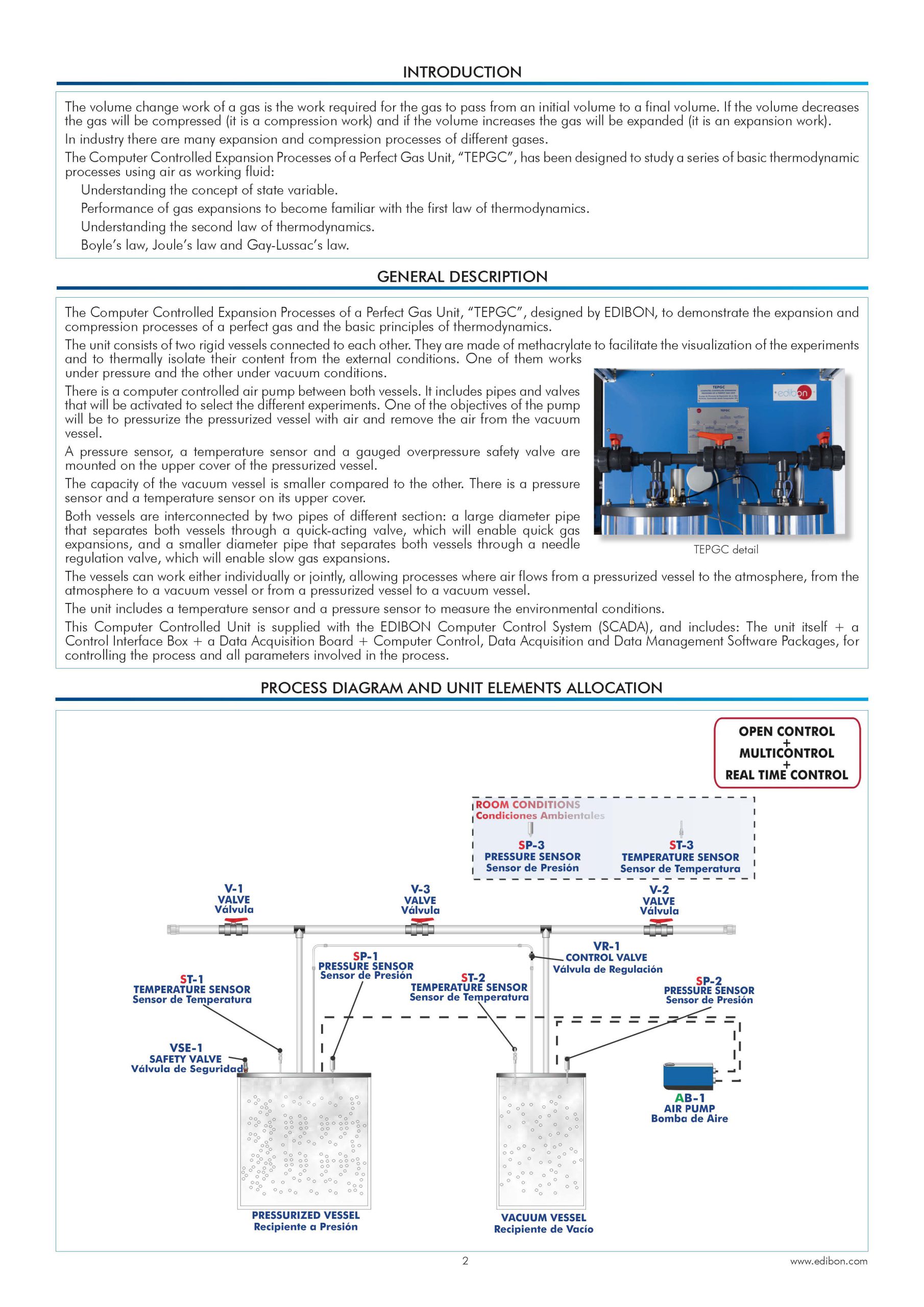
Computer Controlled Expansion Processes of a Perfect Gas Unit
INTRODUCTION
The volume change work of a gas is the work required for the gas to pass from an initial volume to a final volume. If the volume decreases the gas will be compressed (it is a compression work) and if the volume increases the gas will be expanded (it is an expansion work).
In industry there are many expansion and compression processes of different gases.
The Computer Controlled Expansion Processes of a Perfect Gas Unit, “TEPGC”, has been designed to study a series of basic thermodynamic
processes using air as working fluid:
– Understanding the concept of state variable.
– Performance of gas expansions to become familiar with the first law of thermodynamics.
– Understanding the second law of thermodynamics.
– Boyle’s law, Joule’s law and Gay-Lussac’s law.
EXERCISES AND PRACTICAL POSSIBILITIES TO BE DONE WITH THE MAIN ITEMS
- To study of the pressure changes in the processes involves the 1st Law of Thermodynamics.
- Understanding of the 2nd Law of Thermodynamics and its corollaries.
- Different responses resulting from fast or slow changes in a process can be observed.
- Relationship between volume, pressure and temperature can be studied and used to determine other thermodynamic properties.
- Relationship between the pressure and temperature of air can be observer.
- To study the behaviour of a perfect gas and its describing equations.
- Study of the non-flow energy equation.
- Study of the unsteady-flow energy equation (in vacuum mode).
- Study of an adiabatic reversible process (isentropic expansion).
- Study of a constant volume process.
- Study of the conversion of pressure units.
- Study of an adiabatic irreversible process.
- Study of a constant internal energy process.
- Study of the polytropic processes, with the limiting case of n=y.
- Study of the relative and absolute pressures.
Additional practical possibilities: - Sensors calibration.
Other possibilities to be done with this Unit: - Many students view results simultaneously.
To view all results in real time in the classroom by means of a projector or an electronic whiteboard. - Open Control, Multicontrol and Real Time Control.
This unit allows intrinsically and/or extrinsically to change the span, gains; proportional, integral, derivative parameters; etc, in real time. - The Computer Control System with SCADA allows a real industrial simulation.
- This unit is totally safe as uses mechanical, electrical/electronic, and software safety devices.
- This unit can be used for doing applied research.
- This unit can be used for giving training courses to Industries even to other Technical Education Institutions.
- Control of the TEPGC unit process through the control interface box without the computer.
- Visualization of all the sensors values used in the TEPGC unit process.
– By using PLC-PI additional 19 more exercises can be done.
– Several other exercises can be done and designed by the user.



